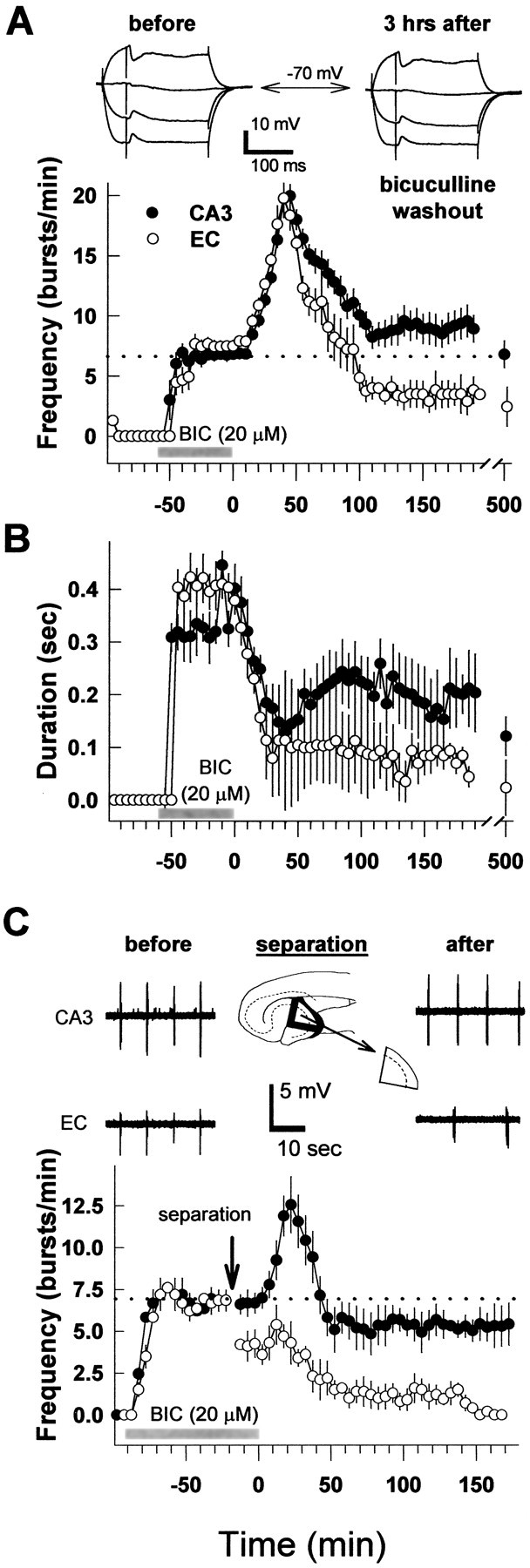Figure 2.

Summary of the effects of bicuculline application and washout on spontaneous bursting activity in intact slices and after separation of the hippocampus from the entorhinal cortex. A, Average burst frequencies before, during, and after 60 min of bicuculline application in the hippocampus (CA3; filled circles) and layers I–III of the entorhinal cortex (open circles). In all graphs, bicuculline application (BIC; 20 μm) is indicated by gray bars, and dotted lines indicate average frequencies obtained during 60 min bicuculline incubation. Insets show representative intracellular recordings from the same CA3 pyramidal neuron after stimulation of recurrent collaterals before (left) and 3 hr after bicuculline washout (right) in the presence of AP-5 (100 μm) and NBQX (10 μm) at holding potentials of –55, –70, –85, and –95 mV. B, Effects of 1 hr bicuculline application on the average burst duration in the same experiments as shown in A (n = 35 slices). C, Average frequencies of bursting activity in the hippocampus and entorhinal cortex before and after their separation (as indicated at the top) followed by bicuculline washout (n = 15 slices). Example traces show CA3 and EC bursting activity before and after separation. Notice the lower frequency in the EC after its separation from the CA3 area and the loss of synchrony with CA3 bursts.
